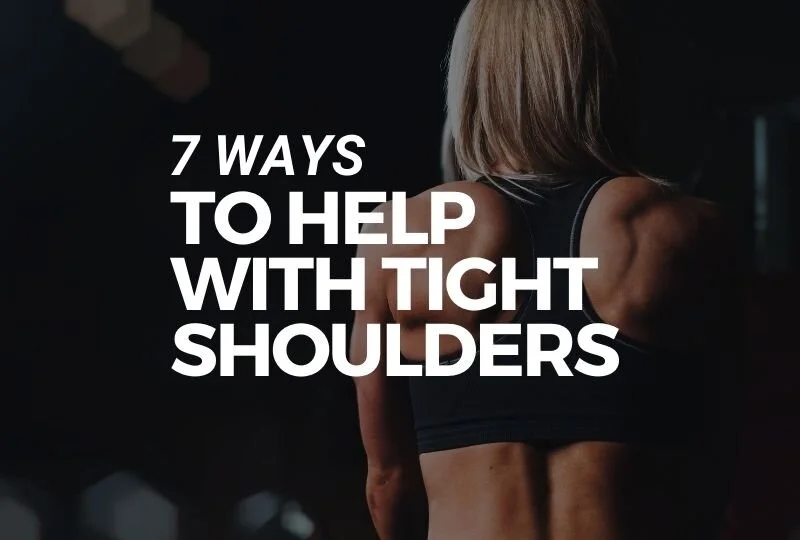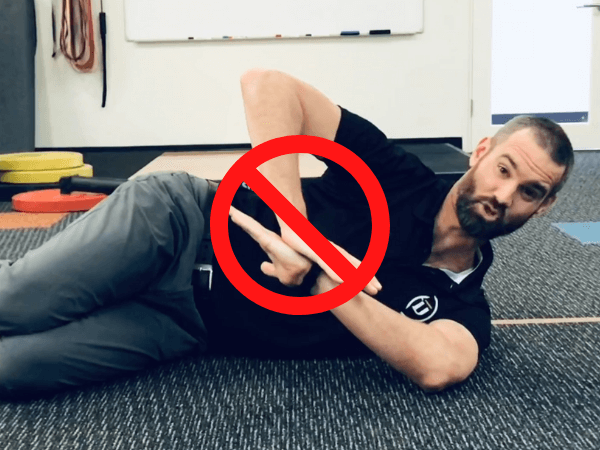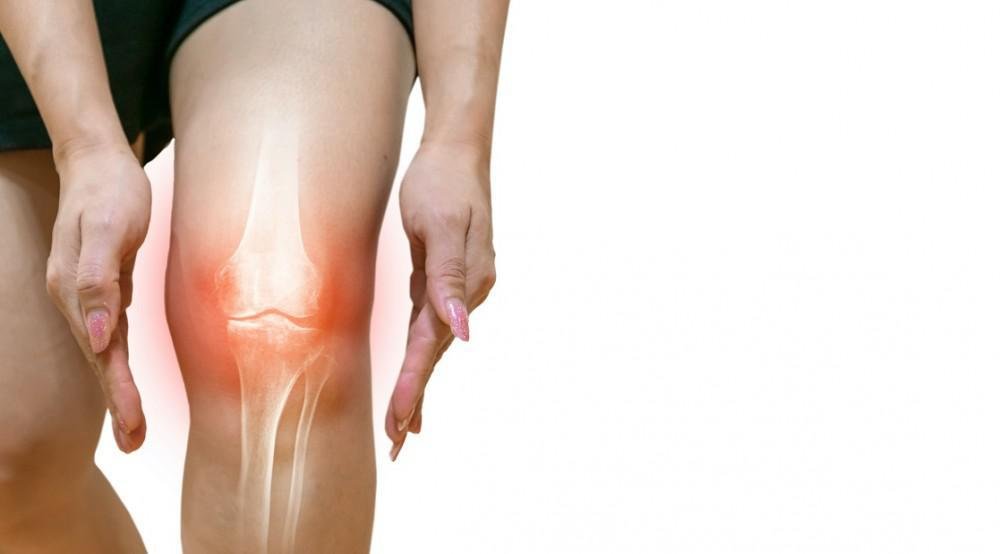7 Ways To Help With Tight Shoulders
Tightness and stiffness in the shoulders is a common problem that can affect anyone. Younger, older, fit or unfit. It can impact upon your daily life, your workouts or your sport.
Unfortunately when it comes to removing shoulder tightness and stiffness, people get the same generic advice of… “You should stretch more”. Stretch what? How? What if stretches do not make a difference?
This blog answers that exact concern - What else can I do to help tight shoulders.
Here is a quick summary of the points
Stop Stretching!
If You Are Going To Stretch - Do It The Right Way
Use A Muscle “RESET”
Strengthen, Strengthen, Strengthen I say!
Stop Poking The Bear!
Move More!
Don’t Forget The Surrounding Areas
Lets get into it!
1. Stop Stretching!
If you have read my other blogs you know that I am not a huge fan of static stretches. We hear this every day in the clinic, “I think I have shoulder pain because I don’t stretch enough?”
Well, if you had tightness, discomfort or pain in your shoulder due to a lack of stretching... then stretching alone should fix it right? Is stretching making it feel better for long periods of time?
I am guessing, no.
So, why are we told to stretch if it is not going to fix tightness? Because it has been an age-old remedy to cure muscle tightness or to improve flexibility! Besides, it is quick, easy and you actually instantly feel... something... right??.
Stretching is a great way to get relief from symptoms, but it will not necessarily fix the problem.
To A Hammer... Everything Looks Like A Nail
A stretch is simply one “tool” in the self-care toolbox that you can use to improve the way you move and feel.
What if I told you that tightness and stiffness in the shoulders can come on for many many reasons other than a “lack of stretching? Is stretching the right “tool” to fix ALL these problems?
Sadly no… it’s not.
Overstretching the shoulder can actually cause BIG PROBLEMS with certain structures if done incorrectly. Overstretched ligaments in your shoulder can give it too much flexibility and make it unstable - OUCH!
You can irritate your shoulder joint with certain shoulder capsule stretches done too often or aggressively like the sleeper stretch.
You can irritate the nerves that come out of your neck and go into your shoulder with certain shoulder stretches.
Nerves HATE stretches!
Does Stretching Decrease Physical Performance?
Yes, some interesting research has come out about static stretching over the last half a decade.
Read more here if you are a little bit nerdy.
The case report reviewed 63 articles to see the effect that stretching had on physical performance. The article concluded static stretches alone, immediately prior to exercise had a negative effect.
However, when coupled with a dynamic stretch and a general warm up, the negative effects may be reversed.
Conclusion, do more than just passive stretches before you workout or play sport.
So You Still Want To Stretch?
Then read on my friend, we are going to show you the ways that we find are the most effective.
2. If You Are Going To Stretch - Do It The Right Way
There are countless ways to stretch your shoulders. A quick google search on “shoulder tightness” returned 11 million articles on how to fix them.
11 MILLION!!
At a quick glance they appear to all give the same generic advice for stretches and posture.
Stretches are a small part to relieve your shoulder tightness. And posture… “insert grumpy face here”... Lets just say that your body loves a little bit of ALL postures - not just the “ergonomically perfect” ones.
Why Do I Dislike Stretches?
Well I don’t really dislike them…. I just do not like the way they are so rapidly given as a solution to EVERYONE'S muscle tightness. How do we even know that you have a problem that a stretch is going to fix? Well we don’t yet.
If you find that stretching:
Improves your range of motion or,
Makes the range of motion feel easier to move into
Then yes - stretches may be appropriate
A stretch has to be making a difference for it to be useful. If you feel no change after the stretch, the stretch may not be the right tool for the job.
Here are my top 3 simple yet effective shoulder stretches:
1. Lat Hang Stretch
2. Active Pec Major Wall Stretch
3. Active Across Body Stretch
3. Use A Muscle “RESET”
Muscle tightness can be addressed in many ways. As mentioned above - just stretching them is not always the way. A reset when applied correctly is a powerful tool that we have used for a long time to promote a feeling of calmness and relaxation.
How does it work?
A reset is anything that affects the muscular, fascial, neural or joint systems.
Some reset techniques and tools are massage, dry needling, vibration, foam rolling, joint mobilisers, breathing and meditation.
I like to think that when you apply a reset technique to someone it helps the surrounding “environment” to calm down, get more mobility or to return to its normal resting state.
A relaxed and calm “system” = Lower muscle tone or tightness = WIN!
No Pain No Gain? Think Again...
A reset does not necessarily need to be painful to be effective either, sometimes comfortable pressure is what the “system” needs… not more pain.
Here are my shoulder reset favourites with lots of different massage tools:
Breathing
Trigger Ball
Foam Roller
Massage Gun
Remedial Massage = lats, teres major, subscap, supraspinatus, upper traps & pecs
Dry Needling = infra spinatus, supraspinatus, lats, teres majors & pecs
So many to choose from! Try one at a time and see which one is the most effective for you.
Now it’s time for the fun stuff.
4. Strengthen, Strengthen, Strengthen I Say!
When weak muscles get frequently overused - they become tight. The tightness is a way for the body to still create muscle tension around a joint to keep it stable.
This is passive protective tightness. This is a great short term strategy for your body to still operate and get by for a few days. But, this stiffness does not actually make your body move any better, because well… it is passive - not active.
It’s All About The Team
Now when the big muscles are not doing their job… Guess what tries to help… The smaller deeper ones.
Does anyone here complain of a tightness really close to the shoulder joint around the back?
That’s where they live.
Better muscle strength and capacity makes the body rely less on passive protective tightness. This makes you one slightly happier human.
How To Strengthen Your Shoulders...
Now there is no such thing as “one perfect shoulder exercise to rule them all” - lord of the rings quote ;)
Why?
Because they ALL have their pros and cons. However there is one series of shoulder exercises that we prescribe to a lot of people…Weighted Carries
Carry Your Way To Shoulder Health
Carries are simple and effective. They come in different forms and are great at creating shoulder and grip strength and capacity while reducing the risk of overload to the shoulder joint.
What Is A Carry?
You carry a weight, it’s as simple as that.
Here are 3 great versions of a loaded carry:
A suitcase carry is a form of carry…
A deadlift is also another form of carry..
A Turkish get up is a carry…
How Heavy?
When you are learning to carry, a medium weight is recommended as going too light will not give your body the feedback it needs to stabilise the carry.
Shoulder Position Is “Packed” NOT Back And Down.
We commonly hear that the shoulder blades need to be “back and down”. No! Whoever started this craze needs to come and talk to us about shoulder health and performance.
Shoulders should have varied positions they can create stability and power from - not just ONE!
Pack Those Shoulders
A solid foundation to your house allows a really strong house to be built on top of it. Shoulder packing is the foundation to shoulder strength. It is an essential position that we teach for you to be able to build up some solid strength from a solid platform.
Packing the shoulders is about creating shoulder blade and shoulder joint stability whilst carrying or lifting a weight.
This is done WITHOUT losing a great shoulder position.
Here is what we mean:
There are plenty of shoulder strengthening exercises out there. But we find that carries can be used with mostly anyone, of any age or background. They are a great bang for buck exercise - scroll back up and check out the videos
5. Stop Poking The Bear!
So what is the bear… and why should you stop poking it?
Great question!
The bear represents your shoulder pain or tightness. “Poking it” refers to you repeatedly doing the same things over and over again that make your shoulder feel tight or painful in the shoulder.
For example, you get ridiculous neck and shoulder tightness when you do dumbbell lateral raises. It has now happened for the last 6 times that you have done it over the last 3 weeks. And it feels as though it’s getting worse.
Do you think that by doing more lateral raises (more poking) over the coming weeks that your shoulder (the bear) is going to miraculously feel better?
Hmmm….. I guess not.
SO STOP POKING THE FRIGGIN BEAR!
Your shoulder is obviously not responding positively to being continually poked. So why continue to do it?
Get it checked out for Pete’s sake.
Your shoulder is giving you feedback - in this case tightness or pain - that it is not responding well to the load.
There could be an underlying problem that is not being addressed.
Here are some things off the top of my head:
Shoulder impingement, neural tension, rotator cuff tendinopathy, scapular dyskinesis, overload (poor programming), poor technique or lack of adequate recovery
Yep that is off the TOP of my head - there are more things that can happen. So please stop poking the bear. Sometimes things need to offload for a little while to allow your body to have time to heal.
6. Move More!
Your body is a learning machine. Whatever you make it do repeatedly, it is going to think that it is important and is going to learn to do it better next time.
So the more static postures you make your body do - the more static resistance is going to build in your body to resist those postures.
The AVERAGE Aussie sits for about 6 hours a day and sometimes up to 14 hours a day! Hence you start feeling tighter when you move less and lighter when you move more.
Physical movement has so many unseen benefits that we seem to not take seriously, such as:
Joint lubrication
Neural Stimulation
Improves respiratory function
Enhances circulation
Improves muscle function and tone
Increases metabolic rate
This daily movement process actually has a scientific name - “NEAT”
Non
Exercise
Activity
Thermogenesis
What a mouth full...
NEAT includes activities or things that are not sport or gym based such as - Walking, fidgeting, yard work, cleaning, washing your car etc.
Here is how you can increase your NEAT…
Have walking or standing meetings rather than sitting meetings
Walk over to talk to someone in the office (if you are not working from home - Thanks COVID)
Get on / off public transport a stop earlier or later and walk the remainder of the way
Cycle to and from work
Fidget while doing computer work
Get out of the office for your tea / lunch breaks
Take the stairs not the lift / escalator
These are all small yet powerful ways to increase your daily energy expenditure and to keep the body moving AND…Its FREE.
7. Don’t Forget The Surrounding Areas
Cue music…The neck bones connected to the… back bone…The back bones connected to the…
You get the idea.
In the case of the shoulder, the surrounding areas such as the neck, thoracic spine, ribs, shoulder blade, elbow, wrist and hand are all areas that can affect the tightness and performance of your shoulder.
If one or more of these areas are not doing their job, the shoulder can start to overload.
Here are some easy ways to maintain those areas:
Wrist and Elbow
Shoulder Blade
Thoracic Spine
Neck
So there you have it!
There are many ways to remove the tightness in your shoulders and keep them feeling healthy and strong. We covered a lot of tips in this blog, so I would suggest starting with one or two of them, NOT ALL OF THEM!
This way you can start to see if the ones you have chosen make a difference to how your shoulder feels. If it feels better afterwards - keep it. If not… move on.
Still Unsure Where To Start?
If you are still unsure on what is the best way to start when it comes to getting your shoulders some relief from tightness, to improve technique or to even remove pain, the Physio team at Fieldwork can tailor a personalised program specific to what your shoulders need.
P.s. we do this on a daily basis for our existing clients with great success.
Simply click here if you are interested in booking yourself in and we can start the process of getting your shoulder feeling great again!
We look forward to helping you in the clinic!


















